Some of the links in this post may be affiliate links.
If you are making a switch to using orchid pots with holes or slits on the side (or perhaps you already have), there are some very important things to be aware of. If you’ve ever made this change with your Phalaenopsis orchids and your plants have struggled, you know exactly what I mean.
Keep reading to discover the pros and cons of using pots with holes on the side, and what you need to be aware of so that you don’t kill your orchids.
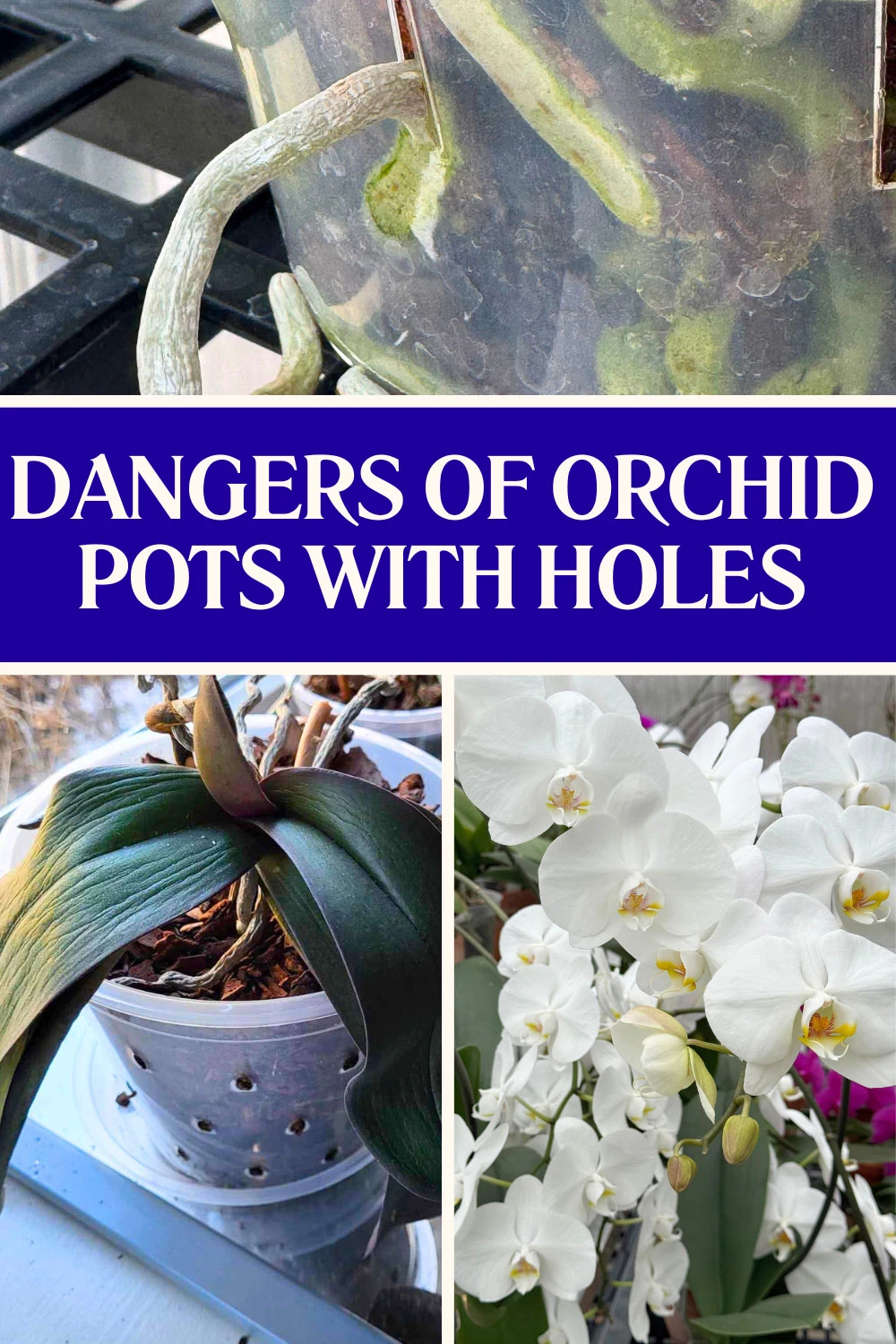
I’ve lost track of how many people have approached me after they have switched their orchids into pots with holes or slits on the side and their orchids suddenly took a downturn. There are a number of “orchid pots” available on the market. Many are clear plastic, and there are even more aesthetically pleasing ceramic ones like in the photo below.
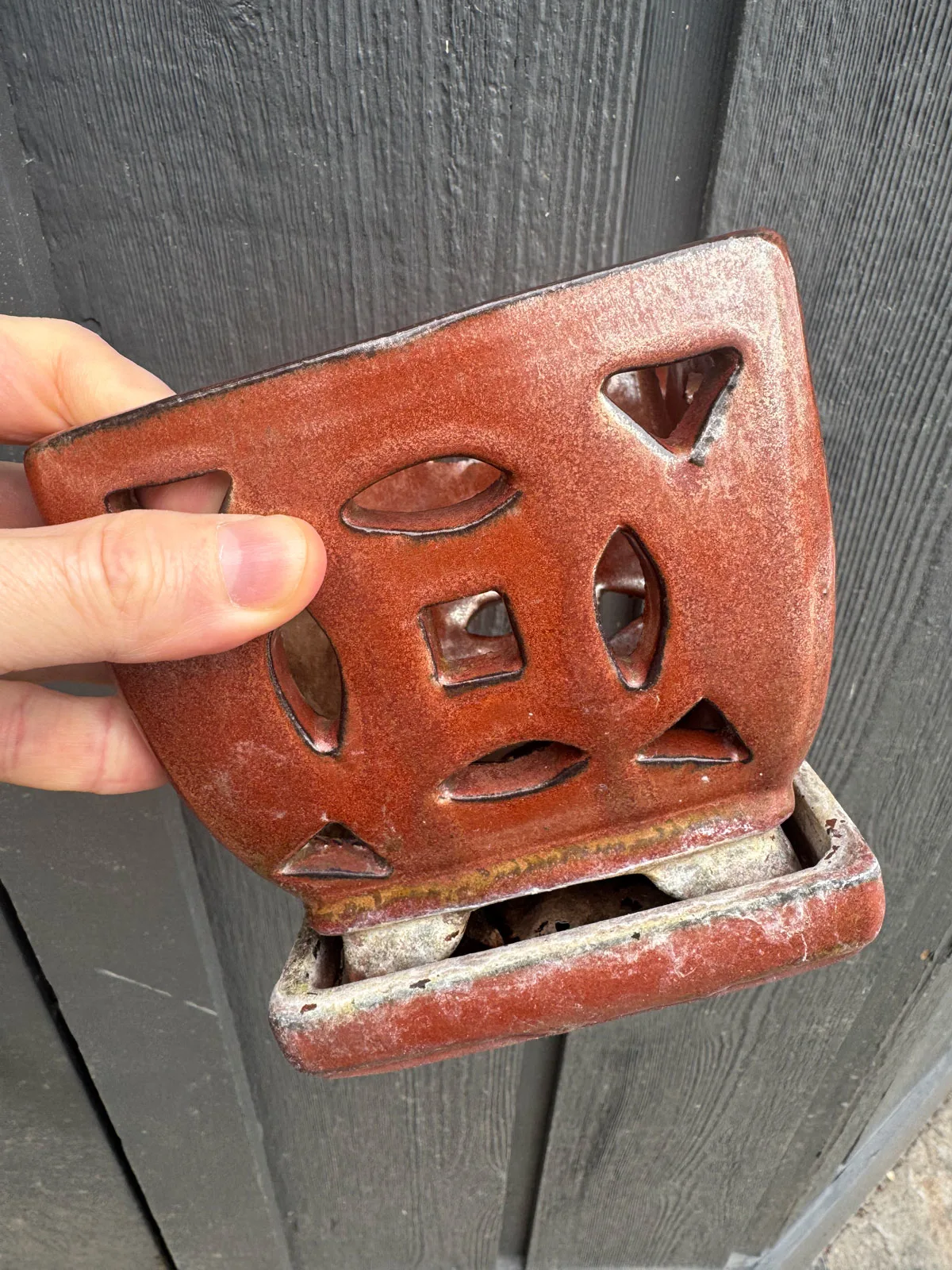
Now, take a look at the photo below of a Phalaenopsis orchid that was sent to me by one of my online orchid care course members in Become an Orchid Master.
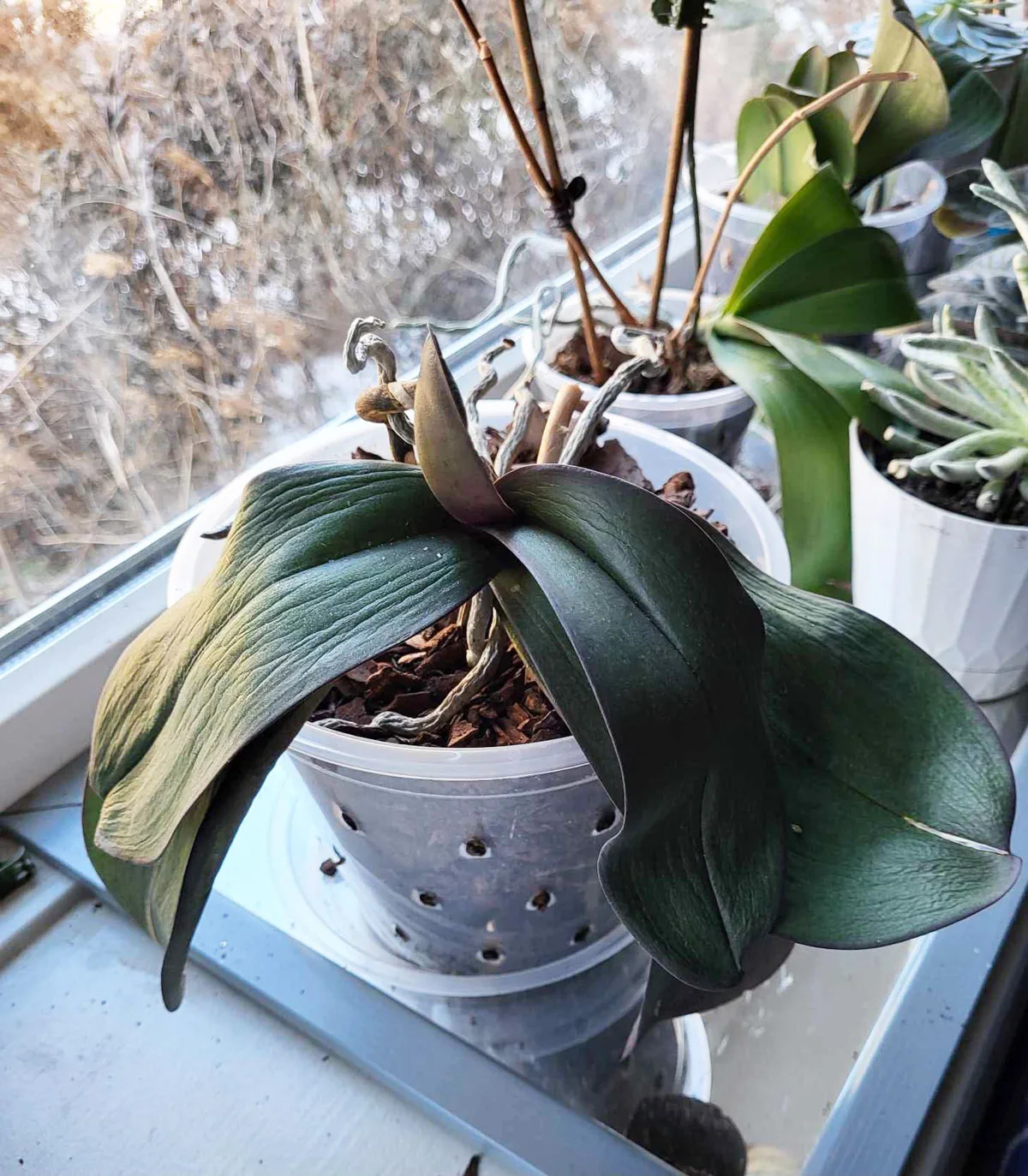
You can see that the leaves are heavily wrinkled, and if you look closely at the roots above the bark mix, you can see that they are shriveled and very dehydrated. If this has happened to you, you may have the false illusion that orchids don’t like pots with holes.
However, moth orchids (or any epiphytic orchid) can grow in a staggering variety of pots and growing mediums. But the key is knowing that you’ll need to adjust your watering routine.
Allow me to list the pros and cons to using orchid pots with holes on the side.
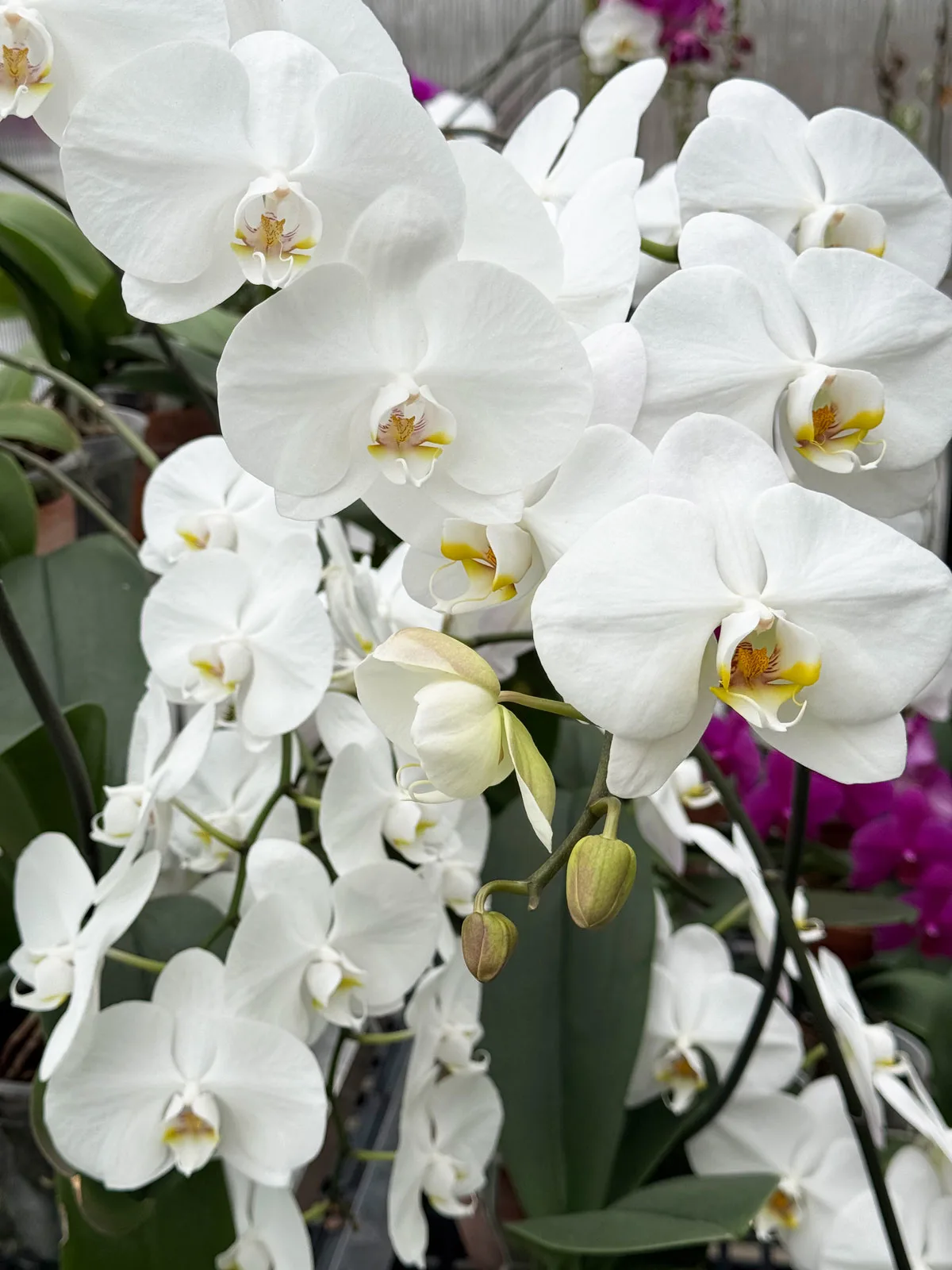
Table of Contents
GROWING ORCHIDS IN POTS WITH HOLES ON THE SIDE
PROS
- The increased air provided by the holes or slits on the side of your pots are wonderful for orchid roots. Any epiphytic orchid, like Phalaenopsis, will benefit from the increased air flow.
- If you have clear plastic pots with holes on the side, you will also have increased light to the roots. Phalaenopsis roots can actually photosynthesize, but the leaves will do most of the photosynthesis and it is NOT a requirement to grow orchids in clear plastic pots!
CONS
- Because of increased air flow, your potting medium can dry out exceptionally fast (particularly if you are growing your orchids in a bark mix). This can make it very difficult to keep up with watering!
- Roots will grow through the holes or slits, making it more difficult to repot in the future. If this happens, you’d either have to cut the pot off carefully (if you have a plastic pot), or trim the roots to remove the plant from its pot. If you have a ceramic orchid pot, it can be quite difficult to manage any roots that have grown through the holes.
Anytime you switch your orchid’s pot or potting medium, or both, you need to be aware of the repercussions of the change. By switching an orchid to a pot with holes on the side, this will cause the bark to dry out much more rapidly than it used to.
OTHER TIPS
There is nothing wrong with using orchid pots with holes on the side, however, if you are growing in a bark mix, you may find it really difficult to keep up with watering, this is exactly what happened in the photo from my course member that I presented earlier in this post.
Even though you may have read somewhere that you need to grow orchids in pots with holes on the side, this is not true at all. Be careful of your sources. For over two decades, I’ve been growing orchids in a variety of pots, including terracotta pots, clear plastic pots, opaque pots, solid ceramic pots, and more. It is NOT necessary to grow orchids in pots with holes on the side!
So unless you want to be watering every 2-3 days, I would avoid using bark mixes with pots that have holes on the side.
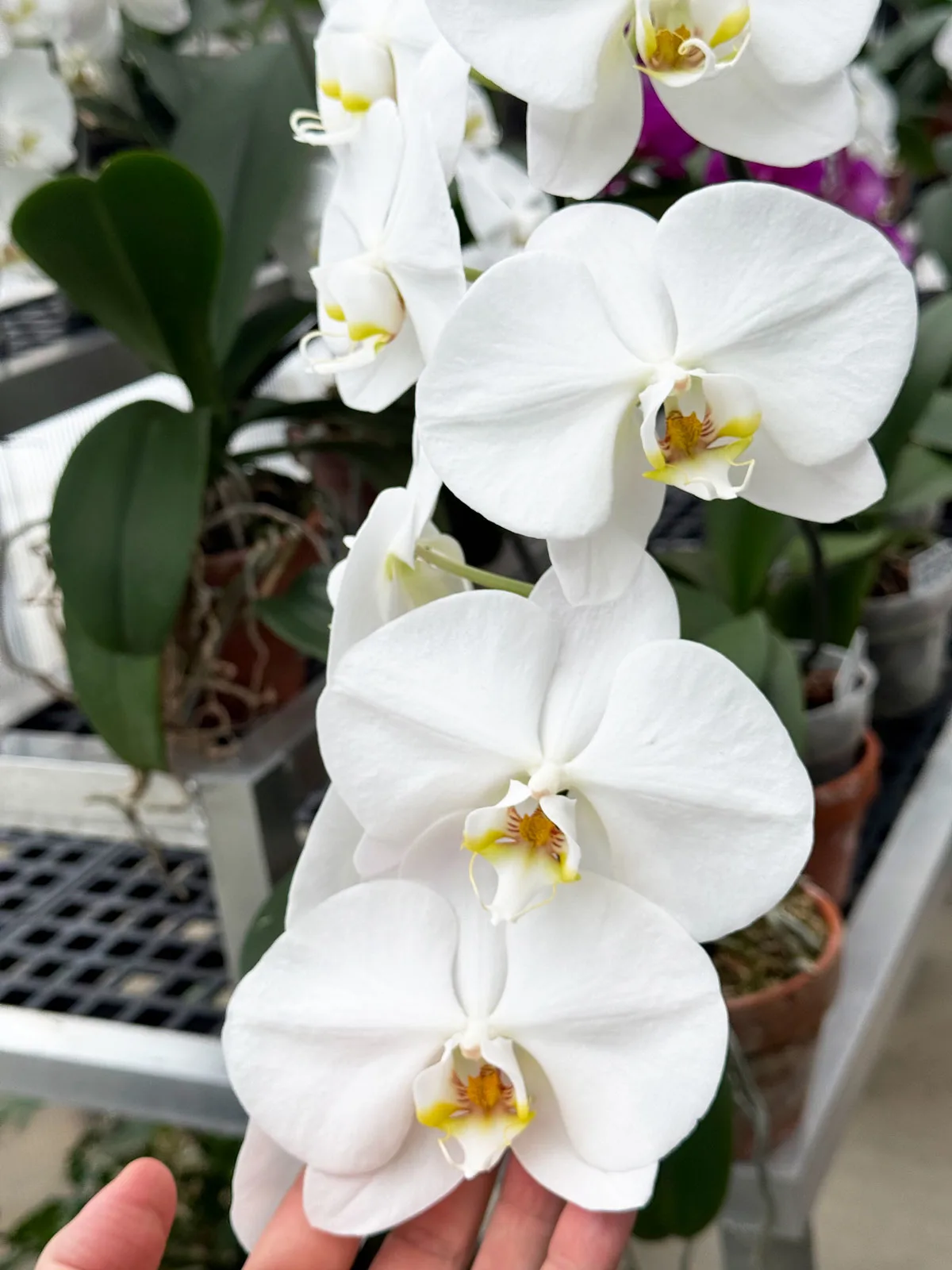
However, one configuration that you might want to consider is using sphagnum moss in these types of pots. Many people hate using sphagnum moss for orchids, but it is actually a wonderful medium as long as you know how to water!
Sphagnum moss holds a lot of water and takes pretty long to dry out indoors (especially if it is packed tightly). So by using sphagnum moss in combination with pots with holes on the side, the holes will allow the moss to dry out more quickly. You will still run into an issue of roots growing through the holes or slits though.
The moral of the story is that if you switch your pot type and/or potting medium, as long as you adjust your watering, your plant will be fine. If you fail to adjust watering and keep doing what you’ve been doing in the past, it will likely result in a wrinkly orchid.
If you want to learn all about how to get your orchid to rebloom reliably and have healthy, thriving moth orchid plants, don’t miss my signature, online orchid care course, Become an Orchid Master. It also includes bonuses with support from me, personally, to guide you in your orchid journey!

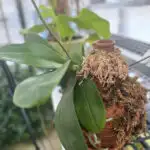





Janet Sherbourne
Wednesday 10th of September 2025
I just bought a orchid. My concern is, do I continue to use the wood chunks? Also what pot should I use? I was thinking a pretty glazed pot, with drainage but should I use gravel in the tray that catches the water? Also how often do I fertilizer? It's close to fall right now.
Raffaele Di Lallo
Thursday 11th of September 2025
Hi Janet, it's hard to say what is best for you without seeing the plant and knowing your growing conditions. Are you on Instagram or Facebook? You can private message me photos and tell me your growing conditions, and I can help from there. You can use a variety of different types of pots and growing mediums. They key is learning how to water and knowing what will work best for your individual growing environment and routine. Here are links to my Instagram, Facebook, and my orchid resource page on my blog:
Instagram: https://www.instagram.com/ohiotropics Facebook: https://www.facebook.com/OhioTropics/ My orchid resource page: https://ohiotropics.com/orchid/
Linda
Saturday 29th of March 2025
I noticed a previous comment from someone who said she "tucks or guides" the roots back inside slits in a plastic pot if they've grown through. What if they're so far out this is impossible to do? Can I trim them off where they stick out, or will that kill the whole root? Thank you for your very informative posts.
Raffaele Di Lallo
Saturday 5th of April 2025
As long as there are a lot of other healthy roots, it would be OK to trim them if they bother you.
Rosa
Sunday 16th of February 2025
This article comes in handy for me! I just repotted several of my orchids in clear pots with holes in the sides. I used bark. Now I know I will need to keep an eye on their hydration. Your articles are fantastic and the pictures are lovely and very useful.
Raffaele Di Lallo
Sunday 16th of February 2025
Hi Rosa! Thanks for commenting, and I'm so happy you're enjoying my site!
Lyn Bristol
Monday 10th of February 2025
I make my own orchid "baskets" using guava tree branches (cut into 5" sticks), or use 1/4" metal mesh. I have also mounted a few on bamboo stalks (the thickened ones), and other wooden slabs, branches and tree trunks. So far, so good. I moved away from the plastic pots, as after a certain time, my type of weather (Tropical) made them deteriorate. I find the methods I use now are easier, and my orchids are happier, as I am. They last longer too - no repotting!!
Raffaele Di Lallo
Tuesday 11th of February 2025
That's wonderful Lyn! You bring up a great point about plastic pots not being ideal for really humid environments. Glad you are having success with mounting orchids. It sure is fun, and I have some mounted orchids in my greenhouse and they love it there (also, very high humidity in there). :-) And not having to repot is amazing!
Dina
Monday 10th of February 2025
I still use pots with slits and small air holes, I created using my soldering tool. I keep my orchids outside on a covered porch in summer. They THRIVE in the humid air. Winter I have them under grow lights. I pot most with layers of bark and Spaghnum moss. Some of my more delicate orchids are in straight moss, due to having small delicate roots that need more moisture. Great article! I have run into these issues as well. I try to tuck the roots or guide them to grow back into the pot.
Raffaele Di Lallo
Tuesday 11th of February 2025
Hi Dina! Glad you enjoyed the article. And it definitely helps if you have high humidity! It sounds like you've figured out your conditions (which is very important in being successful!) :-)